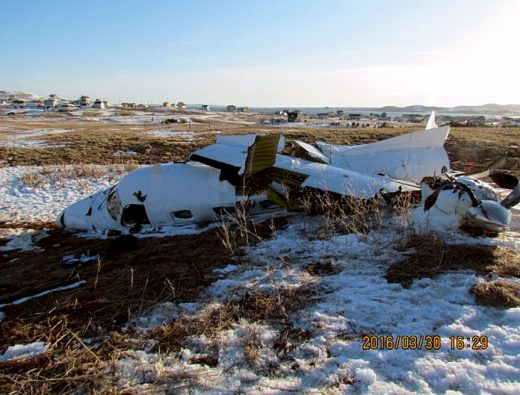 The actual cause of the crash that killed seven people on Iles de Madelaine two years ago was the low altitude upset of the MU-2 turboprop but the Transportation Safety Board says the root cause was an unstable approach. Former Transport Minister Jean Lapierre, four members of his family and two pilots died when the aircraft crashed 1.4 NM short of the runway on the archipelago in the St. Lawrence River. In the final report on the crash, the TSB said the pilot began his descent too late and never regained the proper approach profile before he finally lost control at about 500 feet AGL.
The actual cause of the crash that killed seven people on Iles de Madelaine two years ago was the low altitude upset of the MU-2 turboprop but the Transportation Safety Board says the root cause was an unstable approach. Former Transport Minister Jean Lapierre, four members of his family and two pilots died when the aircraft crashed 1.4 NM short of the runway on the archipelago in the St. Lawrence River. In the final report on the crash, the TSB said the pilot began his descent too late and never regained the proper approach profile before he finally lost control at about 500 feet AGL.
After essentially diving to intercept the approach at maximum speed and descent rates, the pilot let the aircraft get too slow and gave the powerful turboprops full power. The torque put the aircraft into a 70-degree bank and he was too low to recover. For TSB Chair Kathy Fox, it’s an uncomfortably familiar story. “We have seen too many of these unstable approaches in the past lead to tragic accidents,” said Kathy Fox, TSB Chair. “It is important that pilots consider conducting a go-around when an approach is unstable. We will continue to highlight the risks of unstable approaches until there is a reduction in the number of accidents in which approach stability was a causal or contributory factor.” The pilot had voluntarily equipped the aircraft with a simple flight recorder and the data allowed investigators to reconstruct the accident. The benefits of lightweight recorders are obvious: knowing what happened is the first step to understanding why. Although the TSB does not endorse any single product, it would be fair to say that the lightweight recorder on this aircraft can be viewed as an indication of the way forward,” said Fox.
